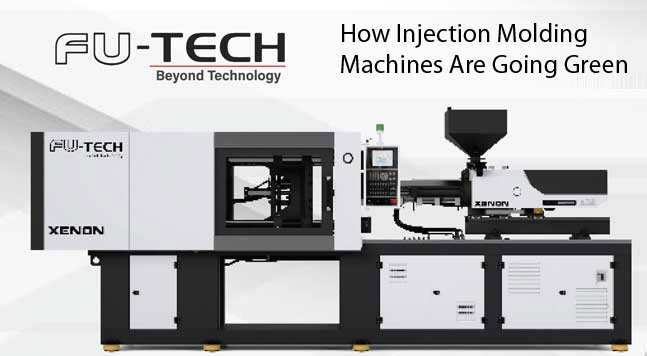As the global push for sustainability intensifies, businesses are reevaluating their processes and technologies to minimize their environmental impact. Injection molding, a widely used manufacturing process, is no exception. Traditionally, this process has been associated with resource-intensive operations, but recent innovations are changing that perception.
Understanding Injection Molding Machines
Injection molding machines are the backbone of modern manufacturing, enabling the efficient production of a vast array of products we use in our daily lives. To appreciate the strides being made in environmentally friendly injection molding, it’s essential to first understand how these machines work and their historical environmental challenges.
How Injection Molding Works
At its core, injection molding is a process of shaping plastic or other materials by melting them and injecting the molten material into a mold. Here’s a simplified breakdown of the process:
- Material Loading: Raw material, typically in the form of small pellets, is fed into a hopper on the machine.
- Melting: The machine’s heating elements melt the material, transforming it into a viscous liquid.
- Injection: The molten material is forcefully injected into a mold cavity, which determines the product’s shape.
- Cooling: Once inside the mold, the material cools and solidifies, taking the shape of the mold.
- Ejection: The newly formed product is ejected from the mold, and the cycle begins again.
Historical Environmental Challenges
For many years, injection molding was associated with environmental challenges:
- Material Choice: Traditional plastics derived from fossil fuels were the primary material, contributing to resource depletion and greenhouse gas emissions.
- Energy Consumption: The high energy demand for heating and operating these machines was a concern in terms of carbon emissions.
- Waste Generation: Inefficient processes often led to significant material waste, adding to environmental issues.
Now, as we delve deeper into this article, we’ll explore how the injection molding industry is addressing these challenges through innovative approaches and eco-friendly practices.
Energy Efficiency in Injection Molding
Energy efficiency is a pivotal aspect of sustainable manufacturing, and injection molding is no exception. In this section, we’ll delve into the strategies and technologies that injection molding companies are employing to minimize their energy consumption and reduce their carbon footprint.
Advanced Heating Technologies
Efficient Heating Systems: Modern injection molding machines are equipped with advanced heating systems that precisely control the temperature of the material. This not only reduces energy waste but also enhances the quality of the final product.
Rapid Heating and Cooling: Some machines utilize rapid heating and cooling technologies, which shorten the production cycle and decrease energy usage. These systems often incorporate efficient insulation to maintain consistent temperatures.
Energy-Efficient Machinery
Electric Injection Molding Machines: Electric machines have gained popularity due to their energy efficiency. Unlike hydraulic systems, which constantly consume energy to maintain pressure, electric machines use power only when needed, reducing overall energy consumption.
Hybrid Machines: Hybrid machines combine electric and hydraulic systems, providing flexibility and energy efficiency. They use electric power for high-precision movements and hydraulics for heavy-duty tasks.
Optimized Manufacturing Processes
Energy-Saving Molding Processes: Injection molding companies are optimizing their manufacturing processes to minimize energy consumption. This includes reducing the overall cycle time and implementing lean manufacturing principles.
Smart Energy Management: Some companies employ smart energy management systems that monitor and control energy usage in real-time, ensuring that energy is only used when necessary.
Sustainable Material Choices
Switching to Sustainable Materials: In addition to energy-efficient machinery, companies are adopting sustainable materials like bioplastics, which require less energy to produce and have a lower carbon footprint.
Material Recycling: Recycling and reusing materials within the production process also contribute to energy savings, as less energy is required to process recycled materials compared to virgin materials.
Environmental Benefits of Energy Efficiency
By prioritizing energy efficiency in injection molding, companies not only reduce their operating costs but also significantly decrease their environmental impact. Lower energy consumption translates into reduced greenhouse gas emissions, making the manufacturing process more sustainable.
In the next section, we’ll explore how injection molding companies are actively working to minimize waste and conserve resources, further contributing to their green transformation.
